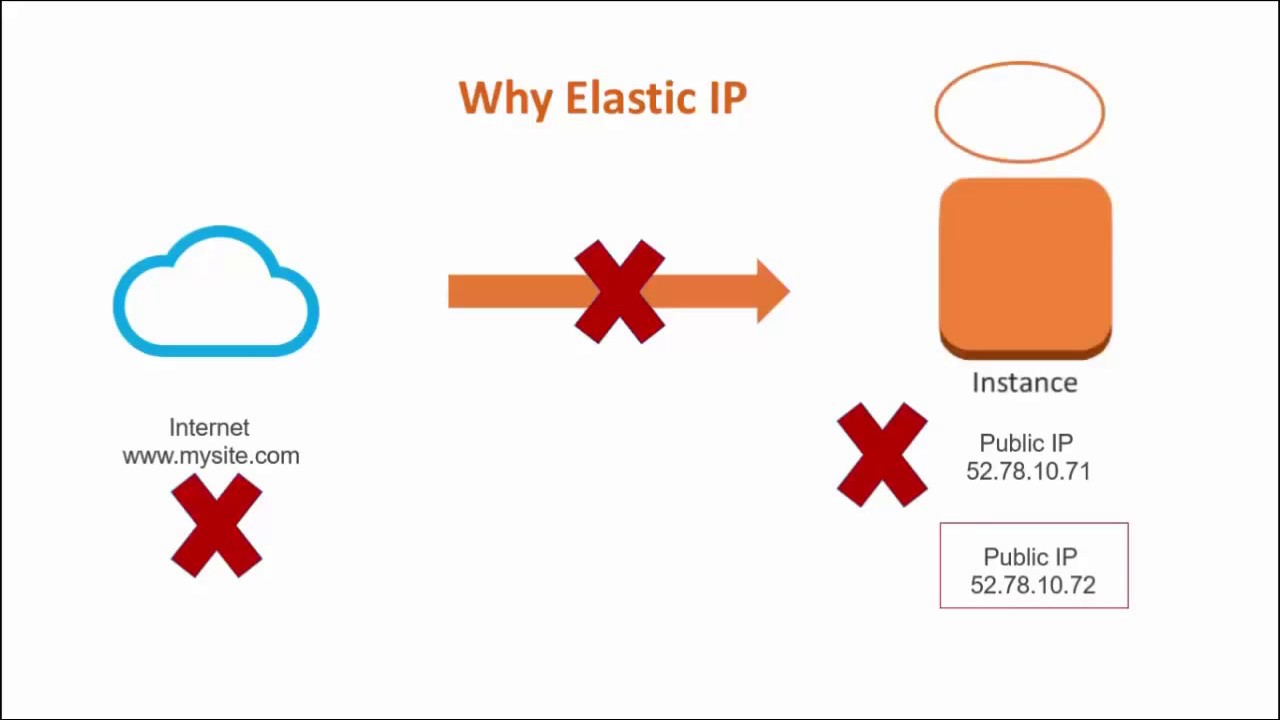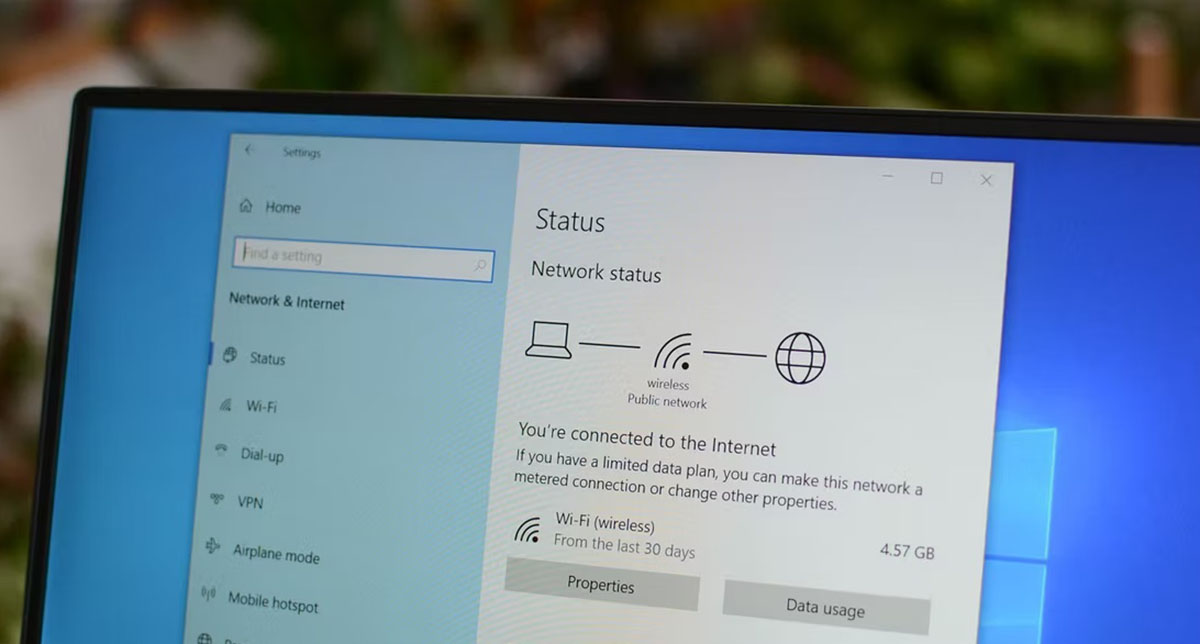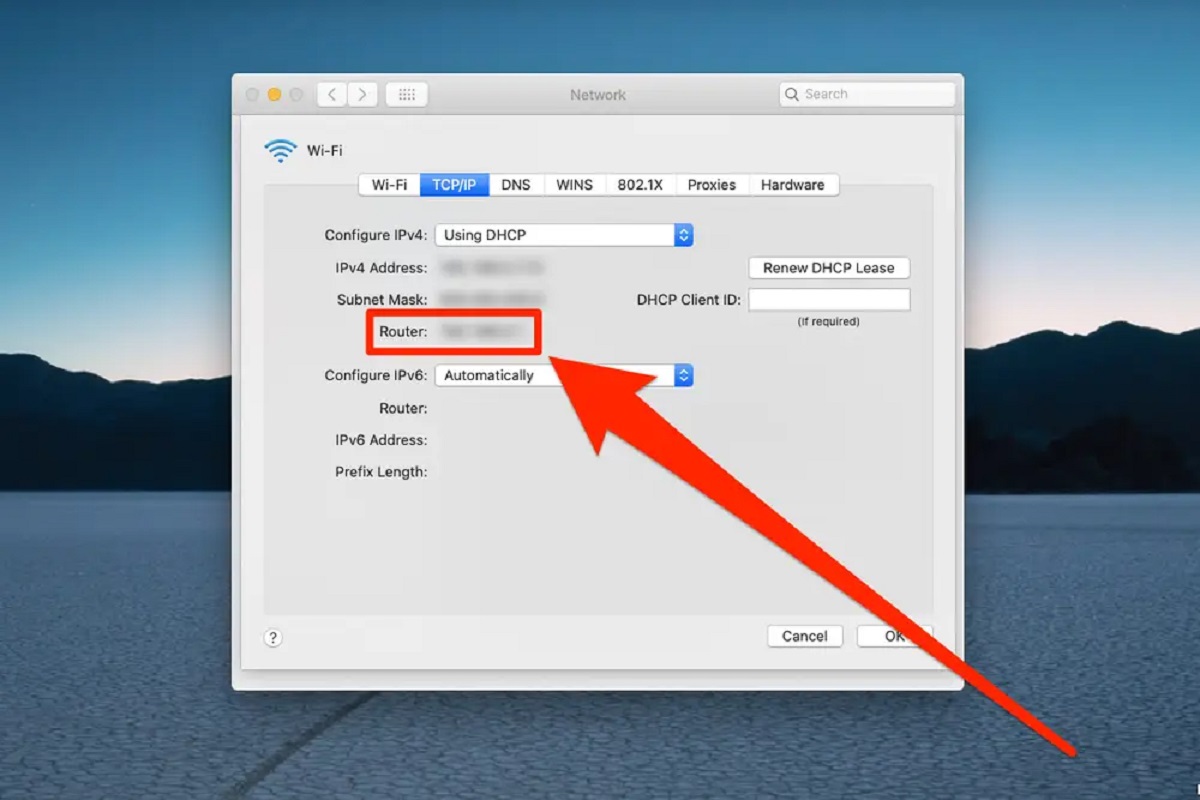Introduction
Welcome to the world of networking and internet connectivity! In this digital age, we are constantly connected to the vast realm of the internet. But have you ever wondered how your computer, smartphone, or any other device is able to communicate with other devices and access websites? This is where IP addresses come into play.
An IP address, short for Internet Protocol address, serves as a unique identifier for every device that is connected to a network. It acts as a virtual address, allowing devices to locate and communicate with each other on the internet. Without IP addresses, it would be impossible for devices to send and receive data.
Imagine the internet as a massive network of roads, and each device is like a building on those roads. In order for data to be transmitted and received, each building needs a unique address so that it can be located and the data delivered to the correct destination. Similarly, IP addresses work as the digital addresses that enable devices to exchange information and access online resources.
IP addresses consist of a series of numbers separated by dots, such as 192.168.1.1. These numbers have a specific structure, and each part has its own significance. By understanding how IP addresses work, you can gain a better understanding of how data transfer happens on the internet.
Throughout this article, we will explore the world of IP addresses, including their types, how they function, and why they are crucial in enabling the internet to function seamlessly. So, grab a cup of coffee and let’s delve into the fascinating world of IP addresses!
Definition of an IP Address
An IP address, or Internet Protocol address, is a unique numerical identifier assigned to every device that is connected to a computer network. It serves as the device’s digital identity, allowing it to send and receive data over the internet.
IP addresses are structured as a series of numbers separated by periods, with each number ranging from 0 to 255. For example, 192.168.1.1 is a commonly used format for IP addresses. This format, known as IPv4 (Internet Protocol version 4), is the most widely used at present.
IP addresses play a crucial role in facilitating communication between devices on the internet. When a device wants to send data, it packages the information into small packets and attaches the recipient’s IP address. These packets are then sent through the network, and routers and other networking devices use IP addresses to direct the packets to their intended destinations. Once the packets reach their destination, the recipient’s device uses its IP address to receive and process the incoming data.
It’s important to note that IP addresses can be dynamic or static. A dynamic IP address is assigned by the network’s DHCP (Dynamic Host Configuration Protocol) server and is subject to change each time the device connects to the network. On the other hand, a static IP address is manually configured and remains constant, allowing for easier management and consistent identification of the device.
In recent years, due to the growing number of devices connected to the internet, the need for more IP addresses has exceeded the capacity of IPv4. This led to the development of IPv6 (Internet Protocol version 6), which uses a longer addressing scheme, allowing for a vastly larger number of unique IP addresses.
In summary, an IP address is a unique numerical identifier that enables devices to communicate and exchange data over the internet. Whether it’s sending an email, browsing a website, or streaming a video, IP addresses play a fundamental role in connecting devices and facilitating the flow of information across the vast digital landscape.
How IP Addresses Work
Now that we have a basic understanding of what an IP address is, let’s dive into how they actually work. In essence, IP addresses serve as the key that allows devices to communicate with each other and exchange data over the internet.
When a device is connected to a network, it is assigned an IP address. This can be done either automatically by a DHCP server or manually configured by a network administrator. Each IP address consists of two main components: the network ID and the host ID.
The network ID represents the network to which the device is connected. It identifies the specific network segment or subnet that the device belongs to. All devices within the same network will have the same network ID, enabling them to communicate with each other directly without the need for routers.
The host ID, on the other hand, is a unique identifier that distinguishes each device within the network. It ensures that data is delivered to the correct device on the network. The combination of the network ID and the host ID forms the complete IP address.
When a device wants to send data to another device, it packages the information into small packets. These packets include the IP address of the recipient device, allowing routers and other networking devices to direct the packets through the internet to the correct destination.
As the packets traverse the network, routers analyze the destination IP address and forward the packets in the most efficient way possible, based on their own routing tables. These routing tables contain information about the best path to reach different networks. The packets are typically passed from router to router until they reach the network where the recipient device is located.
Once the packets reach the network of the recipient device, they are analyzed further. The recipient device examines the packets, checking its own IP address to ensure the data is intended for it. If the IP address matches, the packets are processed and the data is received.
In the case of larger files or webpages, multiple packets are sent and received to ultimately reconstruct the complete data on the recipient device. This process happens seamlessly and quickly, thanks to the efficient routing and addressing provided by IP addresses.
In summary, IP addresses work by providing a unique identifier for each device on a network. They allow devices to send and receive data by specifying the destination IP address in packets, which are then routed through the internet to the correct recipient. IP addresses play a crucial role in enabling communication and data transfer between devices, making the internet a truly interconnected network.
Types of IP Addresses
When it comes to IP addresses, there are different types that serve specific purposes within computer networks. Let’s explore the two main types of IP addresses: public IP addresses and private IP addresses.
A public IP address is the address assigned to a device that directly connects to the internet. It is unique across the entire internet and allows devices to be identified and communicate with other devices worldwide. Public IP addresses are assigned by Internet Service Providers (ISPs) and can be either dynamic or static. Dynamic public IP addresses change periodically, while static public IP addresses remain constant.
On the other hand, a private IP address is used within local networks, such as home, office, or corporate networks. Private IP addresses are not globally unique and are reserved for internal use only. They serve as a way to identify and communicate between devices within a specific private network. The range of private IP addresses is defined by the Internet Assigned Numbers Authority (IANA).
IPv4, the most common version of IP addressing, reserves three blocks of private IP addresses. These are:
- 10.0.0.0 to 10.255.255.255: The 10.0.0.0 block provides a large range of private IP addresses, making it suitable for large networks.
- 172.16.0.0 to 172.31.255.255: This block allows for smaller networks within an organization.
- 192.168.0.0 to 192.168.255.255: The 192.168.0.0 block is commonly used for home networks and small office networks.
Private IP addresses cannot be accessed directly from the internet. Instead, they are typically translated into public IP addresses using a technique called Network Address Translation (NAT) when devices need to communicate outside of the local network.
Private IP addresses offer several advantages, including enhanced security and more efficient use of public IP addresses. With private IP addresses, multiple devices can share a single public IP address, minimizing the number of public IP addresses required.
In recent years, with the adoption of IPv6, the range of IP addresses has expanded significantly. IPv6 includes a large pool of public IP addresses, allowing for more unique addresses to be assigned directly to devices. This helps overcome the depletion of IPv4 public IP addresses and offers a solution for the growing number of connected devices.
To summarize, public and private IP addresses are the two main types of IP addresses used in computer networks. Public IP addresses are assigned to devices connected to the internet and allow global communication, while private IP addresses are reserved for internal networks and enable communication within a local network.
IPv4 vs IPv6
IPv4 (Internet Protocol version 4) has been the predominant version of IP addressing for many years. However, with the rapid growth of internet-connected devices, the limitations of IPv4 have become apparent, leading to the development and adoption of IPv6 (Internet Protocol version 6).
IPv4 uses a 32-bit addressing scheme, allowing for approximately 4.3 billion unique IP addresses. While this may seem like a large number, the increasing number of devices connected to the internet, including smartphones, tablets, IoT devices, and more, has led to a scarcity of available IPv4 addresses.
In contrast, IPv6 utilizes a 128-bit addressing scheme, providing an enormous pool of IP addresses. To put it into perspective, IPv6 offers approximately 340 undecillion (3.4 x 10^38) unique IP addresses. This vast address space allows for virtually unlimited addressing capabilities to accommodate the exponential growth of internet-connected devices.
One of the key advantages of IPv6 is its ability to simplify network configuration. With IPv4, network administrators often had to use various techniques, such as Network Address Translation (NAT), to deal with the limited number of available addresses. IPv6 eliminates the need for NAT and allows for end-to-end connectivity, enabling devices to have globally unique IP addresses without the need for additional translation layers.
Another notable difference between IPv4 and IPv6 is the format of the IP addresses. IPv4 addresses are expressed as four sets of numbers ranging from 0 to 255, separated by periods (e.g., 192.168.0.1). Conversely, IPv6 addresses are represented as eight groups of four hexadecimal digits, separated by colons (e.g., 2001:0db8:85a3:0000:0000:8a2e:0370:7334). This expanded address space and format provide compatibility and flexibility for future network expansion.
IPv6 also brings improvements in security and network efficiency. With IPv6, built-in features like IPsec (Internet Protocol Security) are mandatory, enhancing encryption and authentication for secure communication. Additionally, IPv6 includes more efficient routing and network management, reducing the burden on network infrastructure and improving overall performance.
While IPv6 is the future of IP addressing, its adoption has been gradual due to the need for infrastructure upgrades and compatibility issues with legacy systems that primarily support IPv4. However, as more internet service providers, networking equipment manufacturers, and organizations embrace IPv6, the transition is underway to fully utilize the benefits it offers.
In summary, IPv4 and IPv6 are different versions of the Internet Protocol addressing scheme. IPv4 has limitations in address space, leading to the development of IPv6, which provides a virtually unlimited number of unique IP addresses. IPv6 offers simplified configurations, improved security, and network efficiency, making it the protocol of choice for the future of internet connectivity.
Why IP Addresses Are Important
IP addresses play a critical role in the functioning of the internet and are essential for enabling seamless communication and data transfer between devices. Here are several reasons why IP addresses are important:
- Unique Device Identification: IP addresses serve as unique identifiers for each device connected to a network. They allow devices to be identified and located on the internet, enabling data to be sent and received accurately.
- Routing and Network Communication: IP addresses act as the address system that directs data packets across the internet. Routers and other networking devices use IP addresses to determine the most efficient path for data to travel from the sender to the intended recipient.
- Internet Accessibility: With an IP address, devices can connect to the internet and access online resources such as websites, email servers, file servers, and more. IP addresses bridge the gap between devices and the vast digital world of information and services.
- Device-to-Device Communication: IP addresses enable devices to communicate directly with each other on a network or over the internet. Whether it’s sending an email, initiating a video call, or sharing files, IP addresses establish the foundation for device-to-device communication.
- Security and Network Monitoring: IP addresses play a crucial role in network security measures. They allow network administrators to monitor and track network traffic, detect potential threats, and implement necessary security measures to protect against unauthorized access and malicious activities.
- Quality of Service (QoS) Management: IP addresses assist in managing network traffic and ensuring optimal performance by implementing Quality of Service (QoS) protocols. QoS allows for the prioritization of certain types of data traffic, such as real-time video streaming or voice calls, to ensure a seamless and uninterrupted user experience.
- Geo-location and User Tracking: IP addresses can provide information about the geolocation of devices. This data can be used for various purposes, including targeted advertising, website localization, content delivery, and network troubleshooting.
In today’s connected world, IP addresses are the foundation of internet connectivity and enable the smooth flow of information across the network. They are vital for identifying, routing, and communicating between devices, ensuring that data reaches its intended destination efficiently and securely.
As technology continues to advance, IP addressing will evolve to meet the ever-increasing demands of a connected society. The adoption of IPv6 will provide an expanded pool of addresses and unlock new possibilities for innovation and growth in the digital landscape.
How to Find Your IP Address
If you’re curious about your device’s IP address, there are a few simple methods to find it. Here are a few ways to discover your IP address:
- Using Command Prompt (Windows): Open the Command Prompt application by searching for it in the Start menu. Type “ipconfig” in the Command Prompt window and press Enter. Look for the “IPv4 Address” or “IPv6 Address” in the output. This will display your device’s IP address.
- Using System Preferences (Mac): Go to the Apple menu and select “System Preferences.” Then, click on “Network” and choose your active network connection from the left-hand side. Your IP address will be displayed on the right-hand side under the “Status” section.
- Using the Settings App (iOS and Android): On iOS devices, go to the “Settings” app and tap on “Wi-Fi” or “Cellular.” Find your connected network and tap on the “i” icon next to it. Your IP address will be listed under the “IP Address” section. On Android devices, go to the “Settings” app, tap on “Network & internet” or “Connections,” and select “Wi-Fi” or “Mobile network.” Tap on your connected network and view the IP address under the “IP address” section.
- Using Online IP Address Checkers: If you prefer to check your IP address through a web browser, you can use online IP address checkers. Simply open a browser, search for “What is my IP address,” and click on any of the provided result links. These websites will display your public IP address on their page.
It’s important to note that there are two types of IP addresses you may encounter: public and private. The methods mentioned above will typically provide your public IP address, which is the address visible to the internet. If you’re interested in finding your device’s private IP address, you can refer to the first method, using the Command Prompt or Terminal, to view the “IPv4 Address” or “IPv6 Address.
By knowing your IP address, you can troubleshoot network issues, set up port forwarding, access network resources, or simply satisfy your curiosity about your device’s network identity.
In summary, whether you’re using a Windows PC, Mac, iOS device, or Android device, there are several methods you can utilize to find your IP address. Whether it’s through the Command Prompt, System Preferences, Settings app, or online IP address checkers, these methods will help you discover your device’s IP address and gain useful information about your network connectivity.
How to Hide Your IP Address
There are various reasons why you might want to hide your IP address. By doing so, you can protect your online privacy, bypass geographical restrictions, prevent tracking, or secure your connection from potential threats. Here are a few methods to hide your IP address:
- Use a Virtual Private Network (VPN): A VPN is one of the most effective ways to hide your IP address. When you connect to a VPN server, your internet traffic is encrypted and routed through the server, masking your IP address. This allows you to browse the internet anonymously and securely. There are numerous reputable VPN providers available that offer both free and paid services.
- Utilize a Proxy Server: Proxy servers act as intermediaries between your device and the internet. When you connect to a proxy server, it requests web pages on your behalf, effectively hiding your IP address from the websites you visit. However, keep in mind that not all proxies provide encryption, so your data may not be fully secure.
- Use the Tor Network: The Tor (The Onion Router) network is an anonymity network that routes your internet traffic through a series of volunteer-operated servers. This multi-layered encryption process hides your IP address and provides anonymity. The Tor network is commonly used for accessing the dark web and ensuring privacy, but it may impact browsing speed.
- Connect to Public Wi-Fi Networks: When you connect to a public Wi-Fi network, your IP address is masked behind the network’s IP address. However, keep in mind that public Wi-Fi networks may have their own limitations and security risks, so it’s important to exercise caution and use additional security measures.
- Use a Mobile Device Hotspot: If you’re concerned about your IP address while using a Wi-Fi network, you can consider using your mobile device as a personal hotspot. By connecting your device to your mobile provider’s network, your IP address will be masked and associated with your mobile provider’s IP address instead.
- Enable Network Privacy Settings: Some operating systems and web browsers offer network privacy settings that can protect your IP address. For example, you can enable “Private Browsing” or “Incognito Mode” in web browsers, which prevents the browser from storing your browsing history, cookies, and other data. Additionally, you can adjust network settings to limit information sharing with websites and third parties.
It’s important to note that while these methods can help hide your IP address, they may have limitations or potential trade-offs. For example, using a VPN or proxy server may slightly impact your browsing speed, and free services may have data limitations or less comprehensive security measures compared to paid options.
Remember that hiding your IP address is just one aspect of maintaining online privacy and security. It’s also essential to employ other measures such as using strong and unique passwords, keeping your devices and software up to date, and being cautious when sharing personal information online.
In summary, hiding your IP address can be achieved through various methods, including using a VPN, proxy server, or the Tor network. Additionally, connecting to public Wi-Fi networks or using mobile device hotspots can also mask your IP address. Employing network privacy settings and practicing safe online habits further enhance your privacy and security in the digital realm.
Conclusion
IP addresses are the backbone of internet connectivity, allowing devices to communicate, exchange data, and access online resources. They serve as unique numerical identifiers that enable the seamless flow of information across networks.
In this article, we explored the definition and significance of IP addresses, understanding how they work and the different types that exist. We learned about the transition from IPv4 to IPv6 and the benefits that IPv6 brings in terms of a larger address space and improved network efficiency.
We also discussed the importance of IP addresses in terms of unique device identification, routing and network communication, internet accessibility, security, and network monitoring. IP addresses are critical for enabling device-to-device communication and managing Quality of Service.
Furthermore, we explored how to find your IP address using various methods on different devices. Additionally, we discussed ways to hide your IP address through the use of VPNs, proxy servers, the Tor network, or by connecting to public Wi-Fi networks or mobile device hotspots.
Understanding IP addresses and their role in internet connectivity empowers individuals to make informed decisions about online privacy, security, and network management. As technology advances and the number of connected devices continues to grow, the importance of IP addresses will only become more pronounced.
Whether you are a casual internet user or a network administrator, having a basic understanding of IP addresses allows you to navigate the digital landscape with greater confidence and control over your online presence.
So, the next time you browse the internet, send an email, or stream a video, take a moment to appreciate the role of IP addresses in connecting you to the vast online world. It’s the fascinating and intricate world of IP addresses that keeps us all seamlessly connected in the digital realm.

























